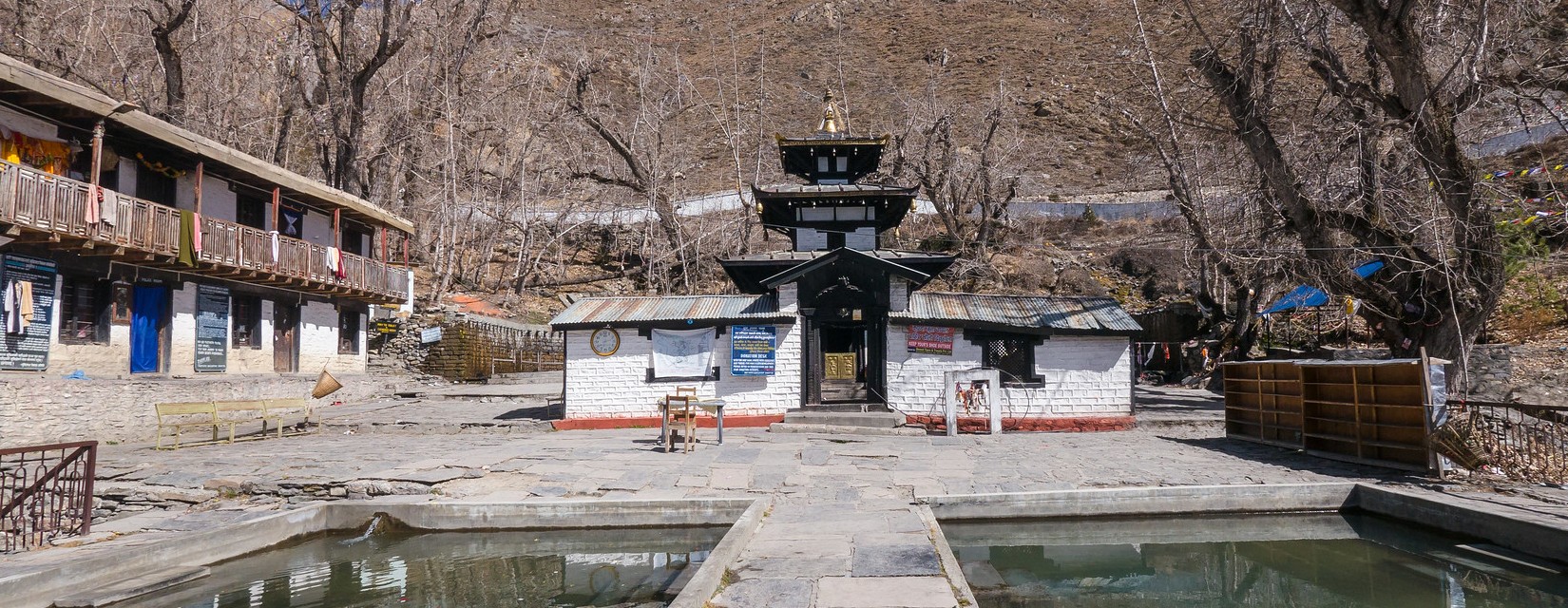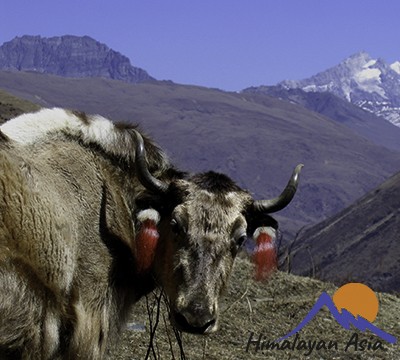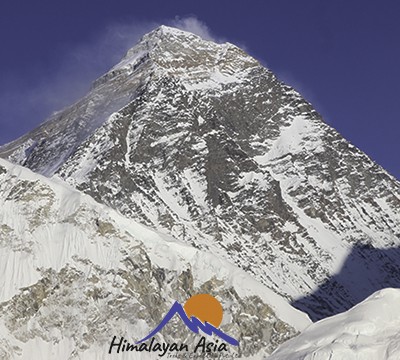Muktinath Temple - Hindu Sacred Place
Muktinath Temple, nestled in the breathtaking Annapurna region of Nepal, is a place of profound spiritual significance and natural beauty. Managed by Himalayan Asia Treks, a renowned trekking and tour agency with a reputation for excellence, the temple stands as a sanctuary for both Hindu and Buddhist devotees, making it a unique symbol of religious harmony in Nepal. Set against a backdrop of snow-capped peaks and nestled in the windswept Kali Gandaki Valley, Muktinath Temple is an oasis of tranquillity and spirituality in the midst of the Himalayan wilderness.
The temple, dedicated to Lord Vishnu, is revered by Hindus as the "Mukti Kshetra," a place of liberation from the cycle of birth and death. Its sacred status is further enhanced by the 108 bull-faced brass spouts that pour holy water, symbolizing the elements of earth, fire, air, water, and ether, believed to cleanse the sins of all those who take a dip beneath them. Buddhists, on the other hand, venerate Muktinath as a manifestation of Avalokiteshvara, the bodhisattva of compassion, thus making it a place of pilgrimage for both religious groups.
Himalayan Asia Treks, with its deep knowledge of the region and a commitment to responsible tourism, offers a range of pilgrimage and trekking packages to Muktinath Temple. Whether you're an ardent devotee seeking spiritual solace or an adventure seeker yearning to experience the rugged beauty of the Himalayas, Himalayan Asia Treks can tailor your journey to meet your unique needs. Their expert guides and experienced team ensure that your trip is not only spiritually fulfilling but also safe and well-organized.
The trek to Muktinath Temple is a journey through diverse landscapes, from the lush foothills to arid high-altitude desert terrains. Along the way, trekkers can immerse themselves in the vibrant culture of the local Thakali and Mustang communities, whose warm hospitality and unique traditions add a rich layer to the pilgrimage experience. Whether you choose to embark on this sacred journey during the autumn, spring, or any other season, the temple and its surroundings offer an awe-inspiring display of nature's grandeur, with clear skies and stunning views of the Annapurna and Dhaulagiri mountain ranges.
In summary, Muktinath Temple, guided by Himalayan Asia Treks, is a place where spirituality and natural beauty harmoniously coexist. It is a testament to Nepal's religious diversity, where Hindus and Buddhists come together to seek solace and enlightenment. The journey to Muktinath Temple is not just a physical trek but a transformative experience for the soul, one that Himalayan Asia Treks ensures is memorable, well-organized, and steeped in the local culture and spirituality of the Himalayas.
Nestled in the majestic Himalayas of Nepal, Muktinath Temple stands as a revered sanctuary, drawing Hindu pilgrims and travelers alike to its sacred grounds. Managed by Himalayan Asia Treks and Expedition P Ltd, this spiritual haven exudes an aura of tranquility and reverence, its ancient stone structures and serene surroundings offering a retreat from the hustle and bustle of modern life. Believed to be a place of salvation and enlightenment, Muktinath Temple holds a special significance in Hindu mythology, with devotees undertaking arduous journeys to bathe in its holy waters and seek blessings from the divine. Surrounded by snow-capped peaks and picturesque landscapes, the temple's allure extends beyond its religious significance, captivating visitors with its natural beauty and spiritual ambiance, making it a cherished destination for seekers of both inner peace and adventure.
Muktinath Temple - Hindu Sacred Place
Muktinath is a Vishnu temple holy to the two Hindus and Buddhists. Muktinath Temple is located in Muktinath Valley at the foot of the Thorong La (Annapurna Circuit Trek) and Jomsom Muktinath Trek mountain pass in Mustang, Nepal. It is one of the world's holiest temples (altitude 3,800 m). Inside Hinduism, it is known as Mukti Kshetra, which from a genuine perspective suggests the ' place of liberation' (moksha) and is one of the holiest places among the Char Dham in Nepal.
This temple is seen as 106th among the open 108 Divya Desam, considered blessed by the Sri Vaishnava followers. Its old name in Sri Vaishnava composing was in 10th CE (Common Era - infers following long haul) while Buddhism was in 568 BCE (Before Common Era - Before long haul), inception, is Thiru Saligramam. This houses the Saligram Shila saw as the regularly available kind of Sriman.
Buddhists call it Chumig Gyatsa, which in Tibetan implies "Hundred Waters." For Tibetan Buddhists, Muktinath is a critical spot of dakinis, goddesses known as Sky Dancers, and one of the 24 Tantric spots. They appreciate the murti as a sign of Avalokiteśvara, who epitomizes compassion.
The site is close to the town of Ranipauwa, which is occasionally wrongly called Muktinath.
Design of Muktinath Temple
Hindu Vaishnavas consider the central spot of love of Sri Muktinath to be one of the eight most-sanctified safe-havens, known as Svayam Vyakta Kshetras. The others are Srirangam, Srimushnam, Tirupati, Naimisharanya, Thotadri, Pushkar, and Badrinath. The temple is close to nothing. The murti is gold and the size of a man.
The prakaram (outer yard) has 108 bull faces through which water is poured. The blessed water that streams in 108 lines around the temple complex connotes the consecrated Pushkarini waters (Temple Tanks) from the 108 Sri Vaishnava Divya Desams, where fans wash up even in cold temperatures.
Shakti Peetha
The Muktinath Temple is seen as a Shakti Peetha for a yatra. It is one of the 108 Siddhpeeth and is named Mahadevi [Devibhagwat 7.14]. Shakti Peethas are sacred places of Shakti (beginning phase immense energy), outlined by the falling body bits of the collection of Sati Devi when Lord Shiva passed on it as he wandered. 51 Shakti Peethas are worshiped by Shaktism, the partner they to the 51 letter sets in Sanskrit. Each Shakti Peetha has a Shakti temple and a Bhairav spot of love in its temple. The Shakti of Muktinath is tended to as "Gandaki Chandi", and the Bhairava as "Chakrapani". Sati Devi's temple on the temple is acknowledged to have fallen there



